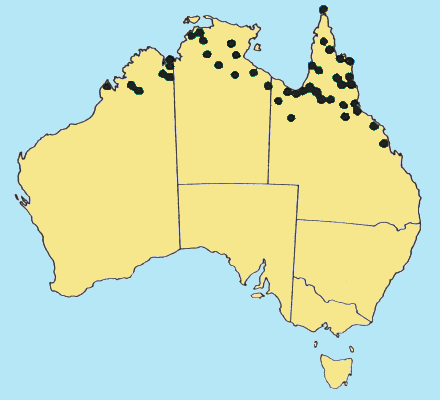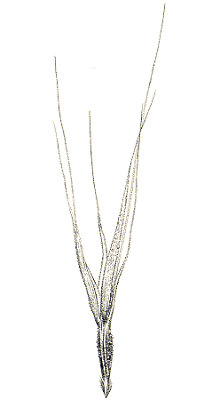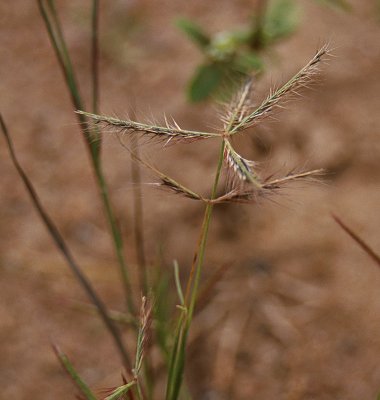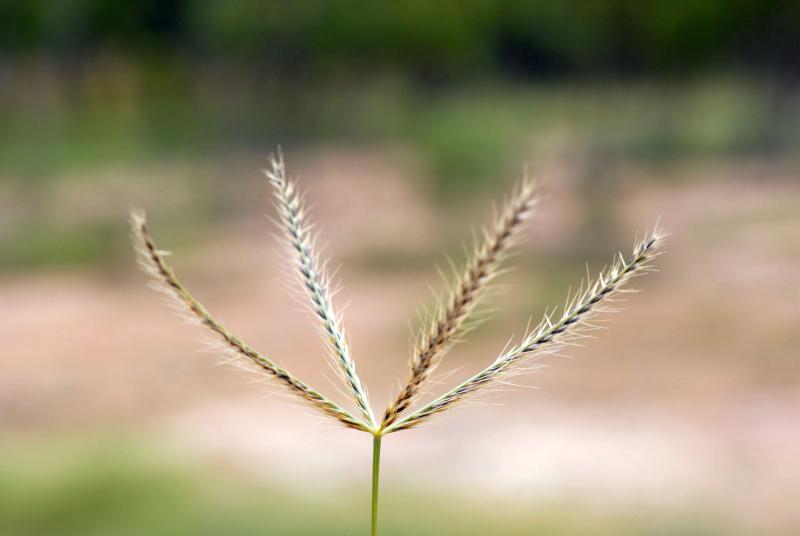Chloris lobata Lazarides. Austral. J. Bot. Supp. 5: 20 (1972).
Classification. (GPWG 2001) : Subfamily Chloridoideae. Cynodonteae.
Type of Basionym or Protologue Information: Australia: Queensland: Burke Dist: 4 mi E of Normanton, 6 Mar 1954, Lazarides 4289 (HT: CANB; IT: BRI, NT, NSW, MEL, AD, PERTH, K, US).
Key references (books and floras): [2002] D.Sharp & B.K.Simon, AusGrass, Grasses of Australia.
Illustrations: [2005] K.Mallet (ed.), Flora of Australia 44B: Poaceae 3 (Fig. 42D, Fig. 44B).
Habit. Annual. Culms erect or geniculately ascending or decumbent or prostrate, 15–45 cm tall. Ligule a fringed membrane, a ciliolate membrane or a ciliate membrane, 0.5 mm long. Leaf-blades 1–15 cm long, 0.2–2 mm wide. Leaf-blade surface smooth or scabrous.
Inflorescence. Inflorescence digitate, with spicate branches.
Spikelets. Spikelets sessile or pedicelled. Fertile spikelets 1 or more flowered, with 1 fertile floret (1–3), comprising 1–3 fertile floret(s), with diminished florets at the apex, cuneate, laterally compressed, 4–5 mm long.
Glumes. Glumes similar, thinner than fertile lemma. Lower glume lanceolate, membranous, keeled, 1-keeled, 1 -nerved. Upper glume lanceolate, 2.6–5 mm long, membranous, keeled, 1-keeled, 1 -nerved. Upper glume surface smooth.
Florets. Fertile lemma 4–6 mm long, keeled, 3 -nerved. Lemma apex dentate or lobed, awned, 3 -awned. Median (principal) awn from a sinus, 3–11 mm long overall. Lateral lemma awns present. Lodicules present. Anthers 3. Grain 1.5–2.4 mm long.
Continental Distribution: Australasia.
Australian Distribution: Western Australia, Northern Territory, Queensland.
Western Australia: Gardner. Northern Territory: Darwin & Gulf, Barkly Tableland. Queensland: Burke, Cook, North Kennedy, South Kennedy.
Notes. Distinguished from C. pumilio by the generally shorter spikes, subequal rather than unequal awns, and the more deeply lobed second lemma (almost to base rather than for half its length).
Endemic; across northern Australia, N of 20°S, from the Kimberley to eastern Cape York Penin. On a range of soil types but mostly heavy soils in seasonally wet areas such as claypans, river flood flats, creek beds and creek banks. Usually common where occurring or co-dominant with other grasses, often in Eucalyptus woodland, or associated with Melaleuca spp. Exhibits weedy behaviour in disturbed areas with lighter soils, such as railway enclosures.









